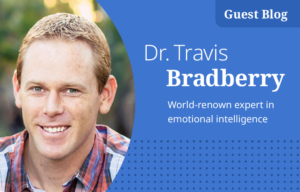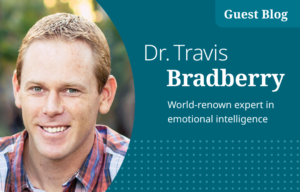Four Steps for Reclaiming Agency and Self Leadership in a Digital Age with Crystal KadakiaCrystal Kadakia recently hosted an Accel5® webinar to help viewers reclaim energy and maximize performance in the digital age. Here are five highlights from the webinar.
By Crystal Kadakia | July 29, 2021
In a digital age of constant connection, we face a daily battle with feeling overwhelmed, experiencing burnout and information overload, isolation, anxiety and more. Digital media is an integral piece of our environment — it affects how we behave, how our neurology is wired, how we interact with others, how work gets done and how we go about our daily lives.
Accel5® hosted a webinar with Crystal Kadakia where she explored the role technology plays in our everyday lives. Additionally, Crystal helped viewers learn to reclaim agency – their individual ability to see possibilities and make choices – to enhance their performance, rather than engage from a reactive, overwhelmed, state of mind. Along with tips, techniques and examples, in the digital age Crystal provided these key takeaways for effectively living into your human potential:
1. Live as a human being, not a human doing
Many of us haven’t taken the time to really think about the impact of technology and the digital age. Crystal defines what she called the “usual approach” which causes many of us to just repeat what used to work before, but in a new context.
The Usual Approach:
- Repeating the same methods in a new context. For example using siloed routines, to-do lists, and brute force hard work to manage your day. Where once there was natural time and space between tasks coming in, today, due to the digital context, there isn’t. Trying to use a one-size-fits-all approach for different tasks and challenges because that’s the way they’ve always been done won’t be effective or sustainable.
- Reacting immediately due to constant connection. Being overloaded with the constant influx of information and communication doesn’t give you a lot of time to react and make informed decisions.
- Ultimately, this leads to a life of just trying to Keep Up with it all.
The New Approach:
- Recognize Choice. There are so many different ways to react to everyday challenges like making decisions or managing your time. You don’t have to do things as they’ve always been done, nor do you have to reinvent the wheel. You have to recognize and create choices intentionally because there will not be a natural space offered to you otherwise.
- See Possibility. Instead of focusing on all of the things you cannot do, think about everything you could do. That’s positive thinking. Take it one step further by moving from positive to possibility. Home in on the things you can do now that you couldn’t do before.
- Decide Sustainably. Once you’ve seen all of the things you can do, pick what you can do over and over with most ease, and that will create a sustainable lifestyle.

In the past, we relied on the natural time lag between information and connection coming in to give us the space to think strategically, be creative, feel “done” at the end of the day, and all the many little things that make us feel human. Routines, where we reacted in the natural pace of time, worked fine to allow us to keep up. Today, without that time lag, this approach becomes extremely chaotic and doesn’t allow you to take the time to digest and work sustainably. We have to create our lives as human beings, not doings, intentionally.
2. Redefine your understanding of productivity
Crystal explains that the outdated understanding of productivity is no longer determined by the number of tasks that one can complete in a certain amount of time on an assembly line. Defining productivity is more involved, especially as all of our roles become more strategic, complex, relational, creative – that which humans are great at, but robots and AI may not be. For example, a sales professional may not make the biggest or highest number of sales the more time they put in. They may find their ability to influence prospects peaks around putting in 4 to 6 hours of conversations – and the rest either disconnecting, reflecting, or strategizing. Productivity shouldn’t have to fit into a box. Every individual will define productivity differently and will find routines and environments to complete day-to-day tasks in a way that works best for them.
3. Overcome common battles faced when reclaiming agency
Some of the most common battles we face today are burnout, tribal safety and isolation. Reclaiming agency in these areas:
- Burnout: Avoid burnout by reclaiming agency over your energy. Find patterns within your day where you feel most productive and create a lifestyle that works best for you.
- Tribal safety: Avoid tribal safety by reclaiming agency over togetherness. With social media and high pressures around diversity and inclusion, it can be easier to stick with like-minded community members. Focus on your strengths to include in the day-to-day tasks and relationships.
- Isolation: Avoid isolation by reclaiming agency over connection. Because of our constant connection through technology, we are no longer limited to geographic relations, but also need to respect our limited capacity to connect.
4. Ask yourself key questions for self-reflection
- What’s on your mind lately that you feel you have little choice over?
- Who is really robbing that choice for you?
- What agency will you reclaim?
“Build relationships through intentional connection, not easy geographic overlap.”
Want to learn more about reclaiming your agency in a digitally dependent world? Watch the “Reclaiming Agency: Self Leadership in a Digital Age” webinar replay.

Crystal Kadakia is a 2-time TEDx speaker, organizational consultant, and best-selling author, known for transforming the toughest workplace changes into exciting possibilities for our digital world. As a consultant, she brings organizations into the digital age, reimagining people strategies with clients in areas such as career development, learning culture, inclusion, leadership development, and employee engagement.



